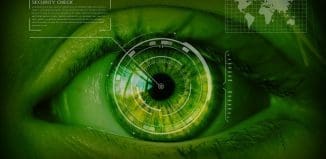Utilizing Video Analytics New Generation, Effectively
This post is also available in:  עברית (Hebrew)
עברית (Hebrew)
The video analytics industry has made its developments in recent years products effective, and useful, and most importantly and distinguished from its early years, started to prove their worth.
Dr Boghossian, whose team is at the forefront of the research and development for a new generation of Video Analytics at Ipsotek, told securitynewsdesk.com that not only is there a real buzz in the air about the power of the increasingly sophisticated techniques that are being applied, it’s also becoming clear that the products are able to perform consistently and at a very high level.
Drilling down to the specifics of how Video Analytics is adding value from both a security and wider operational perspective, Boghossian explained the patented ‘scenario-based rule approach’ that Ipsotek has developed, which is strengthened by the application of advanced conceptual logic and cognitive analysis: “The key differentiator here is that while there are many Video Analytics products looking at event detection, we actually focus on behaviour recognition through the identification of multiple events that may be occurring concurrently or in a certain sequence”.
Boghossian also said that the scenario-based engine is an extremely capable method of solving the complexity of Video Analytics. He points out that it is even possible to set-up ‘dynamic zones’ as in many situations the reality is that it is impossible to define a specific analytics zone ahead of time, and therefore the analytics system should be able to create the zones dynamically as a situation develops in real-time:
“An example of this is what we do for airport security in the cargo areas. You have got the situation where the cargo gets scanned and X-rayed and is then prepared to be loaded onto a plane. At that point, there is obviously a high security threat if an item is added to that cargo.”
Dr Boghossian points out that the area where the cargo is parked for a period of time before it is loaded onto the plane can vary in the camera field of view. “If the whole area is just defined as an intrusion detection zone, to trigger an alarm if someone appears anywhere, many false alarms will be generated because it is an active area.”
So what is Ipsotek’s answer to this dilemma of too many nuisance alarms? The system could automatically define detection zones by referencing the detected cargo containers (instead of the ground area) when they are parked and left for a pre-defined period of a time, this will make these zones become active zones for intrusion detection.
Boghossian highlighted that the real challenge in this application was the requirement to achieve 100% detection rate while maintaining an extremely low false alarm rate: “If the system misses one individual then that would be a breach to airport security, but at the same time, every false alarm will obstruct passengers, restrict flow and cause congestion.”
The deployment of such a Video Analytics Solution required extensive testing and sign off from both the Department Of Transport and the Airport Authority, so confirming the achievement of the holy grail for Video Analytics – a 100% detection rate combined with an extremely low level of false alarms.
Boghossian stated that the overall Video Analytics solution can be enhanced by gathering additional biometric data that is unique to each individual. An example of this would be the use of Facial Recognition and then to feed this constant stream of biometric data into specific databases: “We can design the system so that it will capture and store almost all of the faces that have visited the customer facility, and this allows a situation where the relevant stakeholder can say – ‘we’ve just become aware of a particular person who is perceived as a threat, and we want to know if they have been in our facility, when that was, where they went, who with, and what were they doing’.
The image of this new person of interest is scanned into the system, which then searches through all the faces that have been previously seen in the facility, finding any matches, and displaying the face-shots of the instances of those matches with the associated overview video (before and after their face was captured) along with the timestamps and location data”. The use of the overview cameras provides operators with the ability to see the contextual details and other crucial information, such as what the person of interest is currently wearing and who they are with.





























